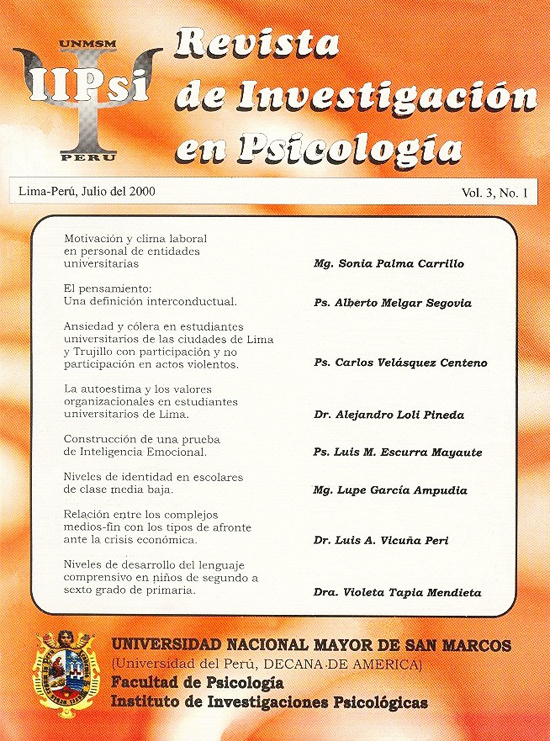The thinking: A interbehavioral definition
DOI:
https://doi.org/10.15381/rinvp.v3i1.4913Keywords:
thinking, matching to sample method, interbehavioralAbstract
The thinking has been defined as it happens in a different dimension from the objective dimension. The thinking would be formal for internal processes unable to be observed. This methodological block was over for the theories of Skinner and Vigotsky. The first one proposed the introduction of objective stimuli in the responses chains of the Thinking process. Vigotsky remarked the slow intervention of tools in the structuration of the thinking behavior, meanly the language. However, these definitions describe the Thinking as an 'stimuli autogeneration' , with many similarities to the internal stimuli of the cognitive definitions. Kantor defined the thinking as the manipulation of implicit and over (responses, but the concept of 'manipulation' reminds mentalistic points of view. Ribes points that the thinking is a special type of relation in which participates the behavior. 'H e describes the thinking as 'referencial autosustitution'. 'The substitution' equals to transform, that means the ability to dettache particular behaviors from their functional correspondence to physical contingencies in the real situation. However, this type of interaction would not need substitutive referencial levels because the substitution, understood as 'transformation' of contingencies, is already present in single situations. We propuse an alternative definition of thinking as the development of new meanings before situations. Besides, we propose a methodology for the study of the thinking process. This is a variation of the matching to sample method, that introduces the behaviors conforming the thinking as alternatives to choose for solving the tasks. This method called 'Igualar' permited better achievements than the 'matching lo sample' method, besides of being more effective to facilitate improvements when transition items were set. However, the differences were not meaningful from the statistics.Downloads
Published
Issue
Section
License
Copyright (c) 2000 Alberto Melgar Segovia

This work is licensed under a Creative Commons Attribution-NonCommercial-ShareAlike 4.0 International License.
THE AUTHORS RETAIN THEIR RIGHTS:
a. The authors retain their trademark and patent rights, and also on any process or procedure described in the article.
b. The authors retain the right to share, copy, distribute, execute and publicly communicate the article published in the Journal of Research in Psychology (for example, place it in an institutional repository or publish it in a book), with acknowledgment of its initial publication in the Journal of Research in Psychology.
c. Authors retain the right to make a subsequent publication of their work, to use the article or any part of it (for example: a compilation of their work, lecture notes, thesis, or for a book), provided that they indicate the source. of publication (authors of the work, magazine, volume, number and date).






